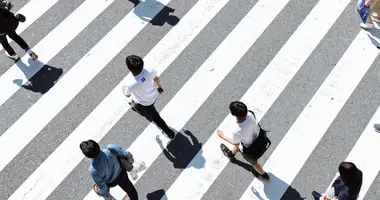The different types of Japanese castles 日本の城
Japan's iconic castles
The Japanese castle, with its multi-story guard towers, its wooden architecture, and its huge open gardens has established itself as one of the iconic places in the country. But did you know that there are different kinds of castles across the land?
The yamajiro
Before the 14th century, Japan only knew temporary castles, consisting of wooden fortifications surrounded by moats, whose objective was to serve as defenses against foreign invasions. The Ki nojo castle, dating from the 7th century, located in Soja (Okayama prefecture) represents this type of construction.
During the Sengoku period of the Warring States (1477 - 1573), the multiplication of conflicts across the country led to the construction of the first castles intended for internal use. These castles are built high up on hills or mountains. "Yamajiro" means "castle on the mountain".
Due to the land on which it was built, the castle had neither guard towers nor moats, but simply a dungeon "tenshu", from the top of which it was easy to monitor the territory within the framework of military operations. Inuyama Castle in Aichi Prefecture belongs to this category.
- Read also: Kurayoshi
The hirayamajiro
The hirayamajiro, or "plain and mountain castle" is a castle built in such a way that it combines the advantages of the heights and those of the plain, allowing both military and civil use (place of political power).
Thus, a castle was built on a hill easily overlooking the plain, like the very famous Himeji Castle, built on an artificial hill.
- Read also: the dungeon of Himeji-jo
Unlike the yamajiro, the hirayamajiro has, in addition to its imposing stone-based tenshu, moats, turrets "yagura" as well as very complex fortification systems allowing the good defense of the citadel.
The hirajiro
The hirajiro is a "plain castle" corresponding to the castles built during a more peaceful period. At that time, the fortress, seen as a symbol of power, played a role that was much more political and economic than strategic, like Nijo Castle in Kyoto.
Indeed, the topographic location makes it much more difficult to defend. Located in the center of towns, it nevertheless retains large moats and turrets as a means of protection.
- Read also: Edo Castle, the heart of Tokyo
These huge castles which extended over several hectares were, like the hirayamajiro, traditionally organized around several enclosures.
The "honmaru", the inner citadel which surrounded the dungeon, served as the residence of the lord, while the "ninomaru" (second enclosure) and the "sannomaru" (third enclosure) welcomed the samurai in particular.
The mizujiro
Alongside these large categories of castles, there is a smaller category, called "mizujiro" or castles in the water.
It includes three castles: those of Nakatsu (Oita prefecture), Takamatsu (Kagawa prefecture), and Imabarai (Ehime prefecture). Castles that face the sea and take advantage of the latter as protection.
- Read also: Four castles in Shikoku





















